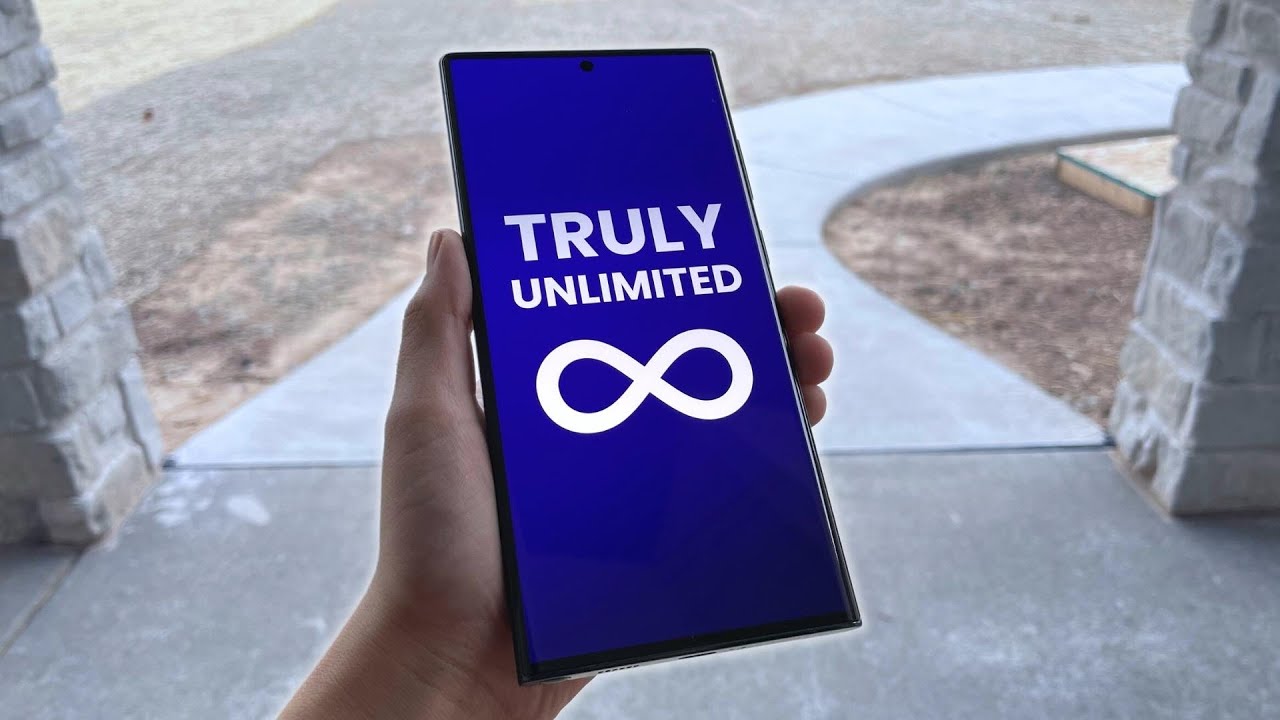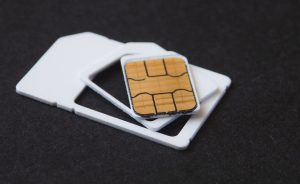The Cost of an Unlimited Data Plan
Unlimited data plans have become increasingly popular in recent years, promising endless streaming, browsing, and downloading without the worry of running out of data. However, before you rush to sign up for one, it’s essential to consider whether you really need it and what it will cost you in the long run.
One of the biggest considerations when it comes to unlimited data plans is the price. While they may seem like a great deal at first glance, they often come with a hefty price tag. These plans tend to be more expensive than limited data plans, and it’s important to assess whether the additional cost is worth it for you.
If you are an average data user and mainly use your phone for calls, texts, and social media browsing, a limited data plan may be more than enough for your needs. Most carriers offer data packages that include a certain amount of gigabytes per month, which can be sufficient for regular usage without breaking the bank.
However, if you are a heavy data user who streams movies and TV shows, plays online games, or relies on your phone for work-related activities, an unlimited data plan may be more suitable. Before making the switch, take a moment to analyze your data usage habits and determine whether you truly need unlimited data or if a larger limited data plan would suffice.
It’s also important to consider the availability of Wi-Fi connections in your daily life. If you spend most of your time at home, work, or places with reliable Wi-Fi, you may not need unlimited data on your phone. By connecting to Wi-Fi networks whenever possible, you can save on data usage and potentially downsize your plan.
Another factor to consider is the advancement in data-saving techniques and apps. Many smartphones now come with built-in features that help minimize data consumption, such as data compression, background data restrictions, and app-specific data controls. By taking advantage of these features, you can reduce your data usage and avoid the need for an expensive unlimited data plan.
When considering a phone plan, it’s essential to review the terms and conditions, especially with unlimited data plans. Some carriers may have restrictions or fair usage policies that limit your data speed after reaching a certain threshold. Make sure you fully understand these limitations to avoid any surprises or frustrations down the line.
Ultimately, the decision to go for an unlimited data plan boils down to understanding your needs and assessing their long-term costs. Don’t be swayed by the allure of unlimited data without evaluating whether it aligns with your data usage habits and budget. By carefully weighing the pros and cons, you can make an informed decision that saves you money while still meeting your data needs.
Understanding Your Data Usage
Before making any decisions about your phone plan, it’s crucial to have a clear understanding of your data usage. By knowing how much data you typically consume each month, you can make an informed decision about whether an unlimited data plan is necessary.
Start by checking your data usage history in your phone settings or through your carrier’s app or website. This will give you an idea of how much data you typically use on a monthly basis. Look for patterns in your usage, such as spikes during certain times of the day or heavy data consumption on specific apps or activities.
Consider the different activities that consume data on your phone. Streaming videos, downloading large files, and video calling tend to use more data than simple web browsing or checking emails. If you frequently engage in data-intensive activities, you may benefit from having more data available each month.
It’s also important to factor in any changes in your data usage habits over time. If you’ve recently started using data-heavy apps or have increased your streaming or gaming activities, your data usage may have significantly increased. Take these changes into account when evaluating your data needs.
Another aspect to consider is your future data usage. If you anticipate any upcoming events or changes in your routines that may require increased data usage, it’s wise to plan ahead. This can help you avoid unexpected data overages or the need to upgrade your plan later on.
Keep in mind that it’s always better to err on the side of caution and have a little more data available than you think you need. This can provide you with some buffer room in case of unexpected data usage or if your usage patterns change suddenly.
Understanding your data usage is essential for making an informed decision about your phone plan. By analyzing your usage history, considering your current and future data consumption, and being mindful of your data-intensive activities, you can determine if an unlimited data plan is truly necessary or if a more cost-effective limited data plan would suffice.
Wi-Fi Availability
When evaluating whether you need an unlimited data plan, one crucial factor to consider is the availability of Wi-Fi connections in your daily life. Wi-Fi is a convenient and cost-effective way to access the internet without using your cellular data. By taking advantage of Wi-Fi networks whenever possible, you can reduce your reliance on unlimited data and potentially save on your phone plan.
Start by assessing the places you frequently visit, such as your home, workplace, or favorite coffee shops. If these locations have reliable and accessible Wi-Fi, you may not need to rely heavily on your cellular data. Connect your phone to the available Wi-Fi networks to enjoy faster download and upload speeds and conserve your cellular data for when you truly need it.
Many public spaces, such as libraries, airports, and shopping centers, also offer free or paid Wi-Fi for visitors. Take advantage of these networks to browse the internet, check emails, or download files without using your data plan. Just be cautious when using public Wi-Fi networks and ensure your connection is secure to protect your personal information.
In addition to public Wi-Fi networks, consider investing in a home Wi-Fi connection if you don’t have one already. This can provide you with a reliable and high-speed internet connection for your smartphones, laptops, and other devices. By connecting your phone to your home Wi-Fi, you can enjoy unlimited browsing, streaming, and downloading without worrying about data usage.
While Wi-Fi availability is a significant consideration, it’s important to note that there may be times when you don’t have access to a reliable network. For instance, when traveling or attending outdoor events, you may not be able to connect to Wi-Fi. In such cases, having a suitable data plan, whether limited or unlimited, can ensure you stay connected even without Wi-Fi.
By taking advantage of Wi-Fi networks whenever possible and strategically using your cellular data in the absence of Wi-Fi, you can optimize your data usage and potentially avoid the need for an expensive unlimited data plan. However, it’s important to strike a balance and consider your specific needs and lifestyle to make the right decision for your phone plan.
Data Saving Techniques
If you’re concerned about exceeding your data limit or want to avoid the expense of an unlimited data plan, there are several data-saving techniques you can employ to minimize your data usage. By implementing these techniques, you can make the most of your data plan and potentially reduce the need for an unlimited data option.
One effective way to save on data is by optimizing your app settings. Many apps have built-in options that allow you to adjust their data usage. For example, you can set video streaming apps to stream at a lower resolution or limit auto-play settings on social media apps. By reducing the amount of data consumed by individual apps, you can extend the life of your data plan.
Another data-saving technique is to disable automatic app updates and app downloads over cellular data. These settings can be found in your phone’s settings menu under the “App Store” or “Play Store” section. By only allowing updates and downloads when connected to Wi-Fi, you can prevent apps from eating up your cellular data without your knowledge.
Using data compression can also significantly reduce your data usage. Certain browsers and apps offer data compression features that compress webpages and files before they are downloaded to your device. This can result in smaller data sizes, allowing you to browse the internet and download files using less data.
Utilizing offline features whenever possible can further minimize your data usage. Many music and video streaming services offer the option to download content for offline viewing. By downloading your favorite songs or videos while connected to Wi-Fi, you can enjoy them later without using any cellular data.
Don’t forget to monitor your background data usage. Some apps continue to consume data in the background, even when you’re not actively using them. By restricting background data usage for non-essential apps or setting restrictions on specific apps, you can prevent unnecessary data drain.
Lastly, consider using Wi-Fi hotspots when available. Public places, such as cafes and libraries, often provide free Wi-Fi access. By connecting to these networks instead of relying on your cellular data, you can save your data for times when Wi-Fi is not accessible.
By implementing these data-saving techniques, you can optimize your data usage, reduce your reliance on unlimited data, and potentially avoid unnecessary expenses on your phone plan. Remember to regularly monitor your data usage to track your progress and make adjustments accordingly.
Reviewing Your Phone Plan
Regularly reviewing your phone plan is important to ensure that it aligns with your current needs and budget. By taking the time to assess your plan, you can determine whether an unlimited data option is necessary or if there are more cost-effective alternatives available.
Start by examining your current phone bill and plan details. Take note of the data allowance, talk time, and messaging services included in your plan. Consider whether you have been consistently using up your data or if you have been consistently going over your limit.
Next, evaluate your usage patterns and habits. Do you primarily use your phone for calls, texts, and light internet browsing, or do you heavily rely on data-intensive activities like streaming music or watching videos? Understanding your usage patterns will help you determine the appropriate amount of data you require.
If you find that you frequently exceed your data limit or require more data than your current plan offers, it may be time to consider upgrading to a higher data allowance. In some cases, it may make more financial sense to opt for a larger limited data plan rather than paying for an expensive unlimited plan.
Additionally, consider whether you are getting the most out of your plan’s other features, such as unlimited calls or international messaging. If you rarely use these services, you may be able to save money by downgrading to a more basic plan that better suits your needs.
Don’t be afraid to reach out to your service provider to discuss your options. They may have promotional offers or discounts available that can help you find a plan that better fits your needs and budget. You can also explore different carriers to determine if they have more competitive plans or better data options.
Remember to consider contract terms and fees associated with making changes to your plan. Some carriers charge penalties for early termination or changing your plan mid-contract. Take these factors into account when reviewing your phone plan and weigh the costs of making any adjustments.
Ultimately, reviewing your phone plan regularly is essential for ensuring you are getting the most value for your money. By evaluating your usage patterns, assessing your plan’s features, and exploring different options, you can make an informed decision about whether an unlimited data plan is necessary or if there are more suitable and cost-effective alternatives available.
Assessing Your Needs
Before determining whether an unlimited data plan is right for you, it’s crucial to assess your specific needs and requirements. Understanding how you use your phone and what you use it for will help you make an informed decision about your data plan.
Start by considering your usage habits. Do you primarily use your phone for basic tasks like calls, texting, and occasional web browsing? Or do you heavily rely on your phone for streaming videos, playing games, or downloading large files? Understanding your usage patterns will give you insight into the amount of data you require.
Think about the apps and activities that are essential to your daily life. Are there data-intensive apps or services that you rely on, such as video conferencing or cloud storage? By identifying these key apps or services, you can better understand if you need unlimited data or if a more limited plan would suffice.
Take into account the number of devices that require data connectivity. If you have multiple devices, such as tablets or smartwatches, that rely on your data plan, you may need to consider a higher data allowance to accommodate their usage.
Consider your future needs as well. Are there any significant changes in your lifestyle or work that may require increased data usage in the near future? For example, if you’re planning to work remotely or travel frequently, you might need a larger data plan to support your activities.
It’s also important to evaluate your budget and affordability. Unlimited data plans can be more expensive compared to limited plans, so you’ll need to consider whether the cost is justified by your usage patterns and needs. Assess your budget and determine how much you can comfortably allocate towards a phone plan without overspending.
Don’t forget to factor in the availability of Wi-Fi networks in your daily life. If you primarily use your phone in areas with reliable Wi-Fi connections, you may not require unlimited data as you can take advantage of Wi-Fi for most of your data needs.
By thoroughly assessing your needs, usage patterns, future requirements, budget, and Wi-Fi availability, you can make a well-informed decision about whether an unlimited data plan is necessary or if a more limited data plan will suffice. Remember, choosing the right data plan is crucial for optimizing your phone usage, managing your expenses, and ensuring you have a seamless and reliable mobile experience.
Alternative Data Plans
While unlimited data plans may seem enticing, they might not always be the most cost-effective option for everyone. Fortunately, there are alternative data plans available that can provide suitable options for different usage patterns and budgets.
One alternative to unlimited data plans is a tiered or limited data plan. These plans allocate a specific amount of data each month, which can range from a few gigabytes to several terabytes. If you’re a moderate data user and don’t engage in data-intensive activities on a regular basis, a limited data plan may be a more suitable and affordable choice.
Many carriers also offer shared data plans, which allow multiple devices to share a pool of data usage. This option can be ideal for families or households with multiple devices, as it allows for more flexibility and cost savings. With shared plans, you can allocate data to different devices based on their usage needs.
If you prefer more control over your data usage, consider a pay-as-you-go or prepaid plan. These plans allow you to purchase a specific amount of data in advance and only pay for what you use. This can be a good option if you have irregular or fluctuating data consumption or if you are on a tight budget.
Another option to consider is Wi-Fi-only plans. These plans provide calling and text messaging services but rely on Wi-Fi networks for data access. If you have consistent access to Wi-Fi in your daily life, a Wi-Fi-only plan can be a budget-friendly alternative to unlimited data plans.
Carriers also frequently introduce promotional or limited-time offers that provide discounted or enhanced data plans. Keep an eye out for any special deals or promotions that may align with your usage patterns and budget. These offers can provide temporary relief for heavier data users without committing to the high cost of an unlimited plan.
Remember that the key to finding the right alternative data plan is to evaluate your needs, usage patterns, and budget. Consider the amount of data you typically use, the activities that require data, and the availability of Wi-Fi networks in your daily life. Armed with this information, you can choose a data plan that suits your requirements while keeping your costs in check.
Take the time to compare different plan options from various carriers, and don’t hesitate to reach out to customer service representatives to clarify any questions or concerns you may have. With a bit of research and careful consideration, you can find an alternative data plan that meets your needs and saves you money.
Surcharges and Hidden Fees
When evaluating data plans, it’s essential to closely examine any surcharges and hidden fees that may be associated with them. These additional costs can significantly impact the total amount you pay each month and can make a seemingly affordable plan much more expensive in the long run.
Some common surcharges include activation fees, which are often charged when you first sign up for a new plan or switch carriers. These fees can range from a few dollars to upwards of $50 and are typically non-refundable even if you decide to cancel your plan shortly after activation.
Another surcharge to be mindful of is the early termination fee. If you sign up for a contract-based plan and decide to cancel before the contract term is complete, you may be subject to a hefty early termination fee. These fees can range from a few hundred dollars to the remaining balance of your contract.
Additional charges may also apply for exceeding your data allowance or for using certain services, such as international calling or premium content. Familiarize yourself with the terms and conditions of your plan to understand how these fees are applied and whether it aligns with your usage patterns and needs.
It’s important to be aware of any hidden fees that might not be explicitly mentioned in the plan’s advertised price. These can include administrative fees, regulatory fees, or taxes that are added to your monthly bill. These fees can vary based on your location and carrier, so carefully review the breakdown of charges to better understand the actual cost of your plan.
When comparing different data plans, it’s crucial to consider the overall cost, including both the advertised price and any additional fees or surcharges. This will give you a more accurate understanding of what you’ll be paying monthly and will help you make an informed decision.
If you have any doubts or questions regarding the charges associated with a data plan, reach out to the carrier’s customer service representatives. They can provide clarification on specific fees and assist you in understanding the terms and conditions of your plan.
By carefully reviewing the surcharges and hidden fees associated with a data plan, you can avoid any surprises when it comes to your monthly bill. Understanding the cost breakdown will allow you to make a more informed decision and choose a plan that not only fits your data needs but also aligns with your budget.
Changes in Data Usage Over Time
As technology continues to advance and our digital habits evolve, it’s important to recognize that data usage patterns can change over time. What may have been sufficient data in the past may not meet your current needs. Therefore, it’s crucial to periodically assess your data usage and consider whether your current plan is still suitable.
Keep in mind that the apps and services you use today may require more data than they did when you initially signed up for your plan. Streaming platforms, gaming apps, and social media platforms constantly update their features and content, often resulting in higher data consumption. Consider how your usage of these apps may have changed over time and evaluate whether your current plan can accommodate these new demands.
Additionally, as technology advances, new services and applications are introduced that may require more data. For example, if you’ve recently started using video conferencing for work or online education, your data usage will likely increase significantly. Take note of any emerging trends or technology shifts that may impact your data usage and adjust your plan accordingly.
Changes in your personal or professional life can also affect your data usage. If you’ve recently started a new job that requires frequent travel or remote work, you may find yourself relying on your cellular data more often. Assess any lifestyle changes you’ve made and consider whether your current plan can support your new needs.
It’s also worth noting that data usage tends to increase over time for most individuals. As we become accustomed to having constant access to the internet, our reliance on data grows. Consider how your data usage has changed over the past year or two and project how it may change in the future. This will help you determine whether an unlimited data plan or a larger data allowance is a more suitable option.
Regularly monitoring and evaluating your data usage over time is crucial for ensuring that your plan meets your needs. It’s important to adapt to changes and stay aware of the evolving landscape of data usage. By staying proactive and keeping an eye on your data consumption, you can make informed decisions about your plan and avoid paying for more data than you actually need.
The Advancement of Data Plans
Data plans have come a long way since the early days of mobile phones. Thanks to advancements in technology and the constant evolution of our digital landscape, data plans have become more versatile, affordable, and personalized to meet our increasingly data-dependent lifestyles.
One significant advancement in data plans is the shift from limited data to unlimited data options. In the past, many data plans imposed strict data caps that left users constantly worrying about exceeding their limits. However, unlimited data plans now offer peace of mind, allowing users to stream, browse, and download without the fear of running out of data. This advancement has revolutionized how we use our phones and has fostered a greater reliance on data-intensive activities.
Another notable advancement is the introduction of shared data plans. In the past, each device would require its own individual data plan, leading to excess costs and inefficiency. Shared data plans have changed the game by allowing multiple devices to share a pool of data, offering more flexibility and cost savings for families or households with multiple devices. This advancement has made it easier than ever to manage data usage across all connected devices.
Carriers have also become more attentive to customer needs and preferences, offering a wider range of data plans to suit different usage patterns and budgets. For light data users, there are now affordable limited data plans that provide just enough data to cover essential communication needs. On the other hand, heavy data users can enjoy the benefits of unlimited data plans, ensuring they have the freedom to fully engage in data-driven activities without constraints.
Furthermore, carriers have introduced add-ons and optional features that allow users to customize their data plans even further. Users can now choose to add features like international calling, data rollover, or access to premium content for an additional fee. This advancement enables users to tailor their plans to their specific needs and preferences, ensuring they get the most out of their data plans.
Cloud storage services have also impacted the advancement of data plans. With the ability to store files and data remotely, users can now rely more on cloud services instead of constantly downloading and syncing data on their devices. This shift has helped reduce data usage and reliance on large data plans, particularly for users with limited data needs.
As technology continues to advance, we can expect further enhancements in data plans. From faster network speeds to more flexible and customizable options, data plans will likely continue to adapt to the ever-changing needs and demands of consumers.









